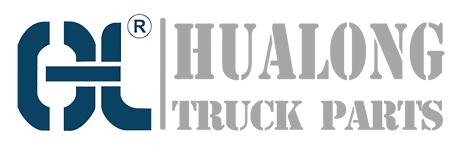Introduction: Understanding High Pressure Relief Valves
High pressure relief valves are crucial components in various industrial applications. These valves play a vital role in maintaining the safety and efficiency of equipment and systems operating under high pressure conditions. In this article, we will explore the importance of high pressure relief valves and discuss their key features, benefits, and applications.
The Function of High Pressure Relief Valves
High pressure relief valves are designed to protect equipment and systems from excessive pressure buildup. When the pressure exceeds a pre-set limit, these valves automatically open to release the excess pressure, preventing potential damage or catastrophic failures. By providing a safe outlet for the high-pressure fluid or gas, these valves ensure the integrity and reliability of the entire system.
The Key Features of High Pressure Relief Valves
High pressure relief valves possess several key features that make them essential in industrial applications. Firstly, these valves are typically made from robust and durable materials, such as stainless steel or brass, to withstand high pressures and harsh operating conditions. Additionally, they are equipped with pressure settings that can be adjusted to meet specific requirements of different systems. Moreover, high pressure relief valves often incorporate fail-safe mechanisms to ensure proper functioning even in the event of power or system failures.
The Benefits of High Pressure Relief Valves
High pressure relief valves offer numerous benefits that contribute to the overall safety and efficiency of industrial processes. Firstly, these valves provide protection against overpressure, preventing equipment damage and potential hazards to personnel. Secondly, they help maintain optimal system performance by relieving pressure when necessary, ensuring smooth operation and longevity of the equipment. Furthermore, high pressure relief valves contribute to regulatory compliance, as they are often required by industry standards and codes.
Applications of High Pressure Relief Valves
High pressure relief valves find applications in various industries and systems where high pressures are encountered. One common application is in the oil and gas industry, where these valves are used to protect pipelines, tanks, and equipment from pressure surges and potential explosions. They are also extensively utilized in chemical plants, power generation facilities, and manufacturing processes involving high-pressure steam or gases.
Choosing the Right High Pressure Relief Valve
When selecting a high pressure relief valve, it is crucial to consider several factors to ensure optimal performance and safety. Firstly, the valve should be compatible with the fluid or gas being handled, taking into account factors such as temperature, corrosiveness, and viscosity. Secondly, the valve's pressure rating should match or exceed the system's maximum operating pressure. Additionally, it is important to choose a valve that meets industry standards and certifications, ensuring reliability and compliance.
Maintenance and Testing of High Pressure Relief Valves
Regular maintenance and testing of high pressure relief valves are essential to ensure their proper functioning. Periodic inspections should be conducted to check for any signs of wear, corrosion, or leakage. Valve components should be cleaned, lubricated, and replaced if necessary. Furthermore, testing should be performed to verify the valve's response to overpressure conditions and ensure it opens at the specified pressure threshold. Proper documentation of maintenance and testing activities should be maintained for reference and compliance purposes.
Common Challenges and Troubleshooting
Despite their importance, high pressure relief valves can encounter certain challenges that may affect their performance. One common issue is valve chatter or rapid opening/closing, which can be caused by excessive pressure fluctuations. This can be mitigated by installing additional components such as dampeners or surge relief valves. Another challenge is valve leakage, which may result from worn seals or improper installation. Regular inspection and maintenance can help identify and rectify these issues to ensure optimal valve performance.
Future Trends in High Pressure Relief Valve Technology
The field of high pressure relief valves is constantly evolving, with advancements in technology aiming to enhance safety and efficiency. One notable trend is the integration of smart and digital features into high pressure relief valves, allowing for remote monitoring, data collection, and predictive maintenance. Additionally, the development of materials with improved strength and corrosion resistance is expected to further enhance the reliability and lifespan of these valves.
Conclusion
High pressure relief valves are essential components in industrial applications, providing protection against overpressure and ensuring the safe and efficient operation of equipment and systems. Understanding their function, features, and maintenance requirements is crucial for selecting the right valve and maximizing its performance. By investing in high-quality high pressure relief valves and adhering to proper maintenance practices, industries can mitigate potential risks, enhance productivity, and comply with regulatory standards.

